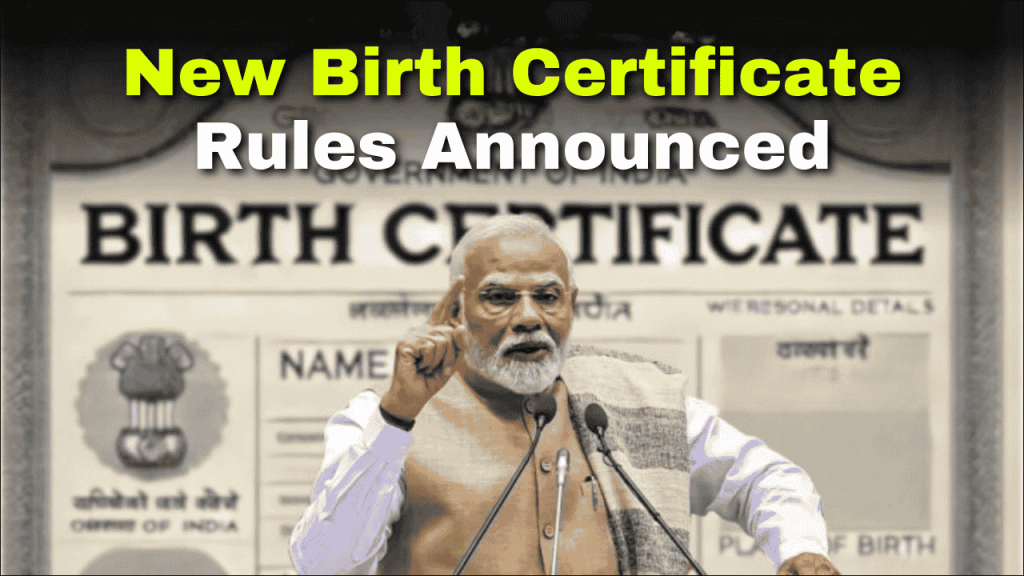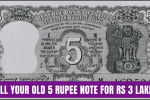
India’s civil registration system underwent a revolutionary transformation with the implementation of the Registration of Births and Deaths (Amendment) Act, 2023, which came into effect on October 1, 2023. As we move through 2025, these changes have become increasingly important for every Indian citizen to understand. The humble birth certificate has evolved from a simple record of birth to a crucial identity document required for numerous essential services. This article explores the new system, its implications, and how citizens can navigate these changes effectively.
The Fundamental Shift in Birth Certificate Status
The amended legislation represents a paradigm shift in how birth certificates function within India’s identity verification ecosystem. Previously considered just one of many possible identity documents, birth certificates now serve as a foundational document that establishes a citizen’s official identity from birth. This centralized approach aims to simplify bureaucratic procedures and strengthen the integrity of India’s civil registration system.
Key Changes at a Glance
- Birth certificates are now recognized as primary identity documents nationwide
- All birth records are being centralized in a secure digital database
- Digital certificates feature enhanced security elements including QR codes
- Universal acceptance across government and private institutions
- Seamless integration with other identity systems like Aadhaar
Essential Services Requiring Birth Certificates
Under the new system, birth certificates have become mandatory for accessing a wide range of services that are integral to civic life. The table below outlines major services where birth certificates are now required:
| Service Category | Specific Requirements | Notes |
|---|---|---|
| Education | School admissions at all levels | Required for both government and private institutions |
| University enrollment | Essential for degree verification | |
| Scholarship applications | Proof of age and citizenship | |
| Travel Documents | Passport applications | Primary proof of date and place of birth |
| Visa applications | Supporting document for nationality verification | |
| Identity & Licenses | Driving license applications | Mandatory age verification |
| Aadhaar registration/updates | Required for biometric ID verification | |
| Voter ID registration | Primary proof of citizenship eligibility | |
| Employment | Government job applications | Mandatory for service records |
| Private sector employment | Increasingly required for background verification | |
| Legal & Property | Marriage registration | Required for both parties |
| Property transactions | Needed for legal identity verification | |
| Inheritance claims | Proof of relationship and identity | |
| Financial Services | Bank account opening | Part of enhanced KYC requirements |
| Insurance policies | Required for age verification and claims |
Comparing the Old and New Systems
The transition from the traditional paper-based system to the new digital framework brings numerous improvements in accessibility, security, and efficiency. The following table compares the key features of both systems:
| Feature | Previous System | New Digital System | Advantage |
|---|---|---|---|
| Format | Physical paper certificates | Digital certificates with QR codes | Prevents forgery, easier verification |
| Accessibility | Available only from issuing office | Online access from anywhere | Convenience for citizens across locations |
| Verification Process | Manual, time-consuming checks | Instant digital verification | Faster service delivery |
| Interdepartmental Recognition | Variable acceptance across agencies | Universal acceptance nationwide | Eliminates bureaucratic redundancies |
| Security Features | Basic watermarks, vulnerable to forgery | Digital signatures, encryption | Enhanced protection against fraud |
| Storage Method | Physical archives requiring space | Secure cloud infrastructure | Better disaster recovery, space efficiency |
| Correction Process | Complex paper-based applications | Streamlined online procedures | Faster resolution of errors |
| Integration Capability | Standalone document | Connected with Aadhaar and other systems | Creates unified identity framework |
| Data Analytics | Limited statistical usage | Comprehensive demographic insights | Better policy planning and implementation |
Application Process: How to Obtain or Digitize Your Birth Certificate
The process to obtain a digital birth certificate varies slightly depending on whether you’re registering a newborn or converting an existing physical certificate to the digital format.
For Newborns (2025 Protocol)
The process has been streamlined for new parents:
- Birth information is automatically captured at the hospital/healthcare facility
- Healthcare providers upload details directly to the central system
- Parents receive an SMS notification with a temporary access code
- Parents verify details through the national birth registration portal
- Digital certificate becomes available for download within 7 working days
- Physical copy can be requested if needed (optional)
For Existing Citizens: Digitization Process
If you already have a physical birth certificate or need to apply for one retrospectively:
- Visit your state’s official birth registration portal
- Create an account using mobile number (OTP verification)
- Enter your existing birth certificate details or necessary information
- Upload supporting documents (existing certificate or alternative proofs)
- Pay the processing fee online (varies by state, typically ₹100-₹300)
- Track application status through the portal
- Download your digitally signed certificate once approved
Required Documents for Retrospective Applications
| Age Group | Essential Documents | Supporting Documents (Any Two) |
|---|---|---|
| 0-5 years | Hospital discharge summary | Immunization records, Aadhaar of parents |
| 5-18 years | School admission records | Aadhaar card, School ID, Passport (if any) |
| Above 18 years | Affidavit sworn before magistrate | Aadhaar card, Voter ID, PAN card, Passport, Property documents |
Implementation Status and Challenges
As of early 2025, the Ministry of Home Affairs reports implementation progress across India:
| Implementation Aspect | Status | Completion Percentage |
|---|---|---|
| States/UTs connected to central database | 34 out of 36 | 94% |
| Urban centers with fully operational digital systems | Major cities and district headquarters | 85% |
| Rural areas with digitization facilities | Block-level implementation | 68% |
| Total existing certificates digitized | Prioritizing active population | 57% |
| Public awareness campaigns | Television, radio, digital media | Ongoing |
While the urban implementation has progressed rapidly, rural outreach remains a challenge. The government has established mobile digitization camps and leveraged Common Service Centers to bridge this gap.
Benefits of the Digital Birth Certificate System
The new system offers numerous advantages for citizens and governance:
- Reduced Documentation Burden: Single document accepted across multiple services
- Enhanced Security: Sophisticated anti-forgery measures protect identity
- Convenient Access: Available 24/7 through online portals
- Faster Service Delivery: Quicker verification leads to more efficient services
- Integrated Identity Framework: Seamless connection with other identity systems
- Improved Statistical Data: Better population statistics for policy planning
- Environmental Benefits: Reduced paper usage and physical storage needs
Navigating Challenges and Special Cases
For Those Without Any Birth Records
For citizens who have never had a birth certificate, the government has established a simplified procedure:
- Visit your nearest municipal office or Common Service Center
- Submit alternative documentation (school records, affidavits, etc.)
- Complete non-availability of birth certificate (NABC) form
- Provide local authority attestation
- Complete verification process (may include neighborhood verification)
For NRIs and Foreign-Born Indians
The process accommodates Indian citizens born abroad:
- Register through the nearest Indian embassy or consulate
- Submit local birth certificate with apostille certification
- Complete additional documentation verifying Indian parentage
- Receive Indian digital birth certificate linked to consular registration
Frequently Asked Questions
Based on citizen inquiries, these are the most common questions about the new system:
Q: Is there a deadline to digitize my existing birth certificate?
While no absolute deadline has been announced, various services are progressively requiring digital verification. It’s advisable to complete digitization by mid-2025, as manual verification options are being phased out for most government services.
Q: How can I verify the authenticity of a digital birth certificate?
All digital certificates contain a QR code that can be scanned using the official verification app or through the national portal. This provides instant verification of the document’s authenticity.
Q: What if there are errors in my digitized birth certificate?
The correction process has been simplified through the same online portal used for applications. You’ll need to submit supporting documents proving the correct information, pay a nominal correction fee, and the updated certificate is typically issued within 15 working days.
Conclusion
The transformation of India’s birth certificate system represents a significant advancement in public administration and citizen services. As the system continues to mature throughout 2025, it promises to reduce bureaucratic hurdles, strengthen identity verification, and simplify access to essential services for all Indians.
For citizens who haven’t yet digitized their birth certificates, now is the time to engage with this system. The streamlined processes make it easier than ever to ensure your foundational identity document is secured within the national framework, providing lifelong benefits in accessing education, employment, travel, and other crucial services.
By embracing this digital transition, India moves closer to creating a robust, efficient and secure identity ecosystem that benefits both citizens and governance.

